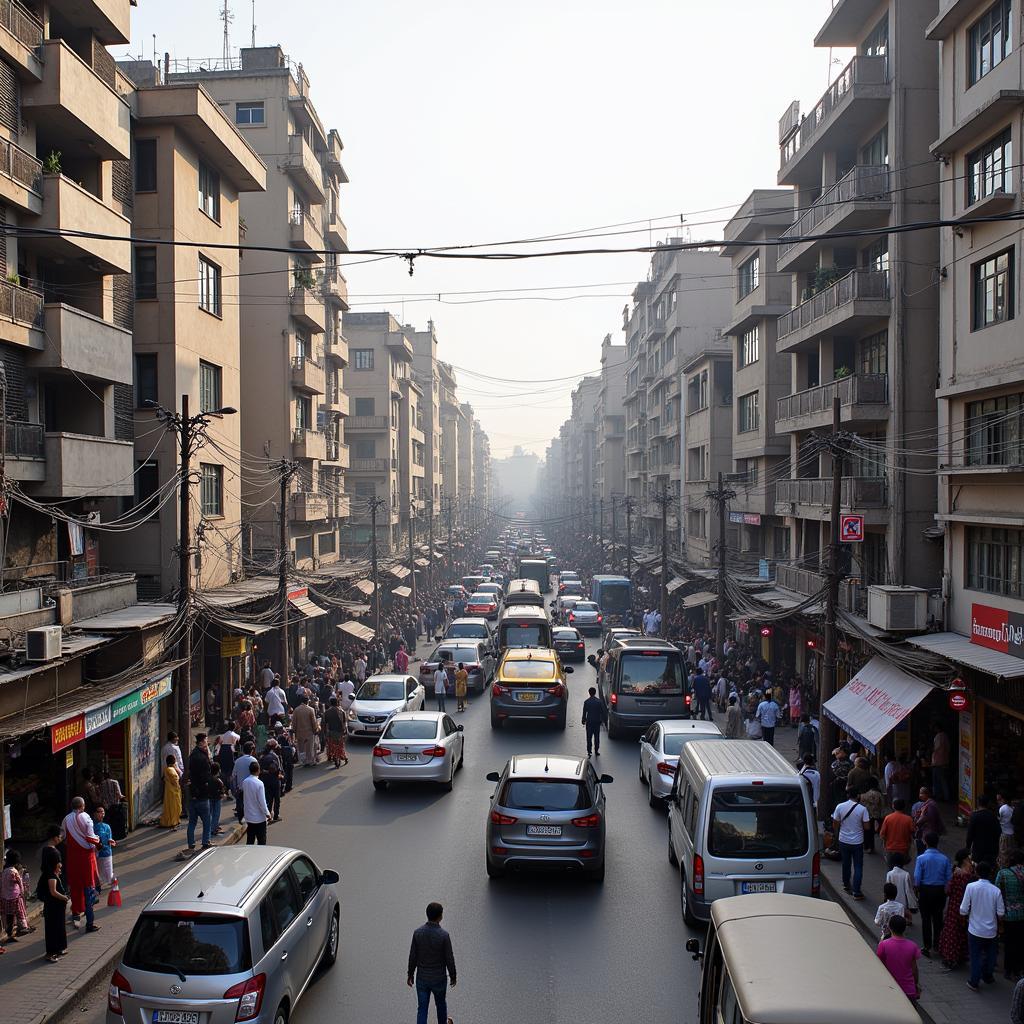Understanding the geography of Pakistan is crucial for grasping the nation’s history, culture, and current affairs. This guide provides comprehensive Geography Of Pakistan Notes, covering key aspects of its physical and human landscapes.
Pakistan’s geographical diversity is striking, ranging from the towering peaks of the Himalayas in the north to the coastal plains of the Arabian Sea in the south. This varied terrain influences everything from climate patterns and agricultural practices to population distribution and economic activities. This guide will delve into the specifics of Pakistan’s location, landforms, climate, and natural resources, providing a holistic understanding of its geographical framework. You can find further details on Pakistan’s geographical boundaries in the Pakistan map 2022.
Exploring Pakistan’s Diverse Landscapes
Pakistan’s physical geography is characterized by a complex interplay of mountain ranges, plateaus, plains, and deserts. The northern regions are dominated by the mighty Himalayas, Karakoram, and Hindu Kush ranges, home to some of the world’s highest peaks, including K2. Moving southwards, the landscape transitions into the fertile Indus River plain, the agricultural heartland of the country. The western and southwestern regions are characterized by arid and semi-arid plateaus and deserts, such as the Balochistan Plateau and the Thar Desert.
The Significance of the Indus River
The Indus River plays a pivotal role in Pakistan’s geography. It is the country’s longest river and a lifeline for agriculture and human settlements. The river and its tributaries form an extensive irrigation network, supporting a vast agricultural landscape that is crucial for food security and economic stability.
Climate Variations Across the Country
Pakistan experiences a wide range of climatic conditions, influenced by its diverse topography and location. The northern mountainous regions have a cold alpine climate with heavy snowfall, while the southern coastal areas experience hot and humid conditions. The Indus Plain enjoys a semi-arid to arid climate with hot summers and mild winters. These varying climate patterns impact agricultural practices, water resources, and the overall lifestyle of the population. More information on Pakistan’s history and its connection to geography can be found in Pakistan studies notes pdf in urdu class 9.
What are the main climate zones in Pakistan? Pakistan’s diverse climate zones range from alpine in the north to arid and semi-arid in the plains and coastal regions.
Natural Resources and Economic Implications
Pakistan is endowed with a variety of natural resources, including minerals, fossil fuels, and fertile land. These resources contribute significantly to the country’s economy. Mineral deposits such as coal, copper, and gold are found in different parts of the country, while natural gas reserves play a crucial role in energy production. The fertile Indus Plain is a vital resource for agriculture, providing a base for food production and supporting livelihoods.
Challenges and Opportunities
While Pakistan’s geography presents numerous opportunities, it also poses significant challenges. The mountainous terrain in the north can hinder transportation and communication, while the arid and semi-arid regions in the west and southwest face water scarcity issues. Climate change also poses a significant threat, with increasing risks of floods, droughts, and glacial melt. However, these challenges also create opportunities for innovation and sustainable development. You can find relevant study material related to this in Pakistan studies notes for class 10th in english pdf.
How does Pakistan’s geography affect its economy? Pakistan’s diverse geography impacts its economy through agriculture, mineral resources, and tourism, but also presents challenges related to infrastructure development and climate change.
Human Geography and Population Distribution
Pakistan’s population is unevenly distributed across its diverse landscapes. The majority of the population is concentrated in the fertile Indus River plain, where agriculture and urban centers thrive. The mountainous regions in the north and the arid regions in the west have a lower population density due to challenging living conditions. Understanding population distribution is essential for planning infrastructure development, resource allocation, and social services. For those interested in further exploring Pakistan’s demographics, the Pakistan studies class 10 book offers valuable insights.
Urbanization and its Impacts
Pakistan is experiencing rapid urbanization, with a growing proportion of the population migrating to urban centers in search of better economic opportunities. This rapid urban growth presents both opportunities and challenges, including the need for adequate housing, infrastructure, and employment opportunities.
 Urban Center in Pakistan and Population Growth
Urban Center in Pakistan and Population Growth
Conclusion: Geography Shaping Pakistan’s Future
The geography of Pakistan plays a crucial role in shaping its present and future. Understanding its diverse landscapes, climate patterns, and natural resources is essential for addressing the country’s challenges and harnessing its potential for sustainable development. By integrating geographical knowledge into planning and policymaking, Pakistan can build a more resilient and prosperous future. Further explore this topic with the Pakistan study mcqs with answers pdf.
FAQ
- What is the highest mountain peak in Pakistan? K2
- What is the longest river in Pakistan? Indus River
- What are the main agricultural crops in Pakistan? Wheat, rice, cotton, sugarcane
- What is the climate like in the Thar Desert? Hot and arid
- What are some of the major cities in Pakistan? Karachi, Lahore, Islamabad, Peshawar
Need assistance? Contact us 24/7: Phone: +923337849799, Email: [email protected], Address: Dera Ghazi Khan Rd, Rakhni, Barkhan, Balochistan, Pakistan.